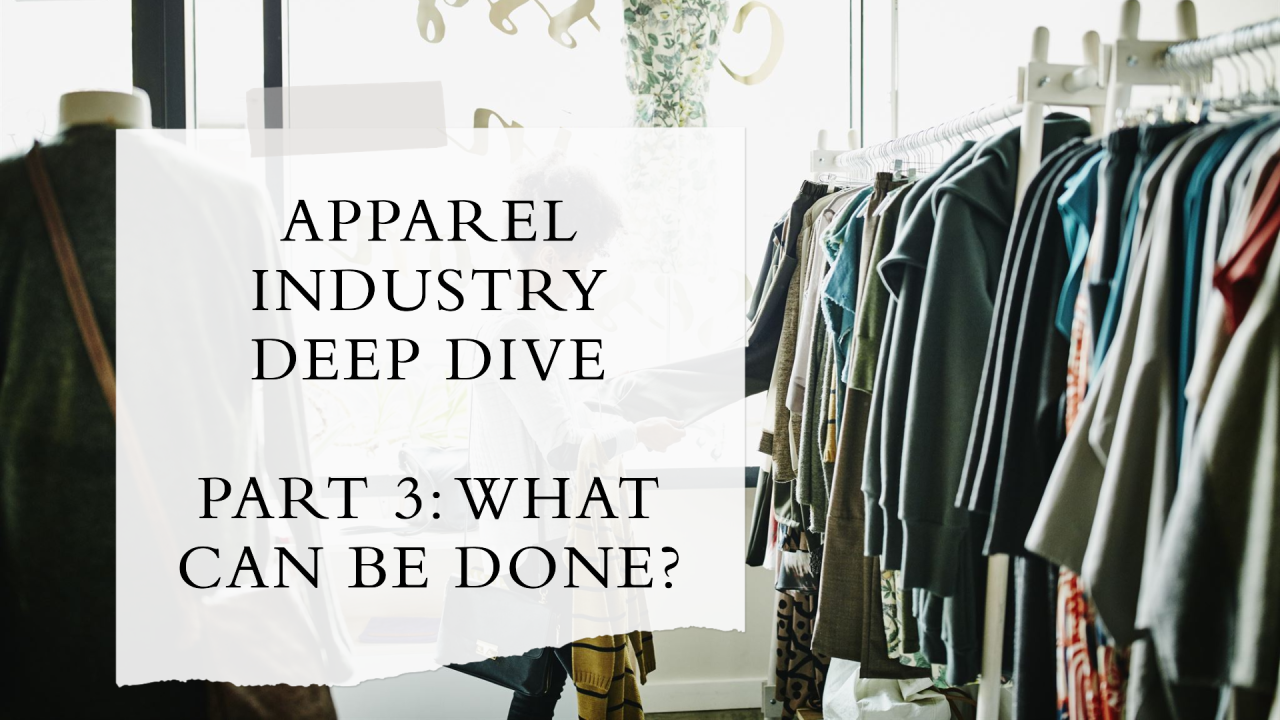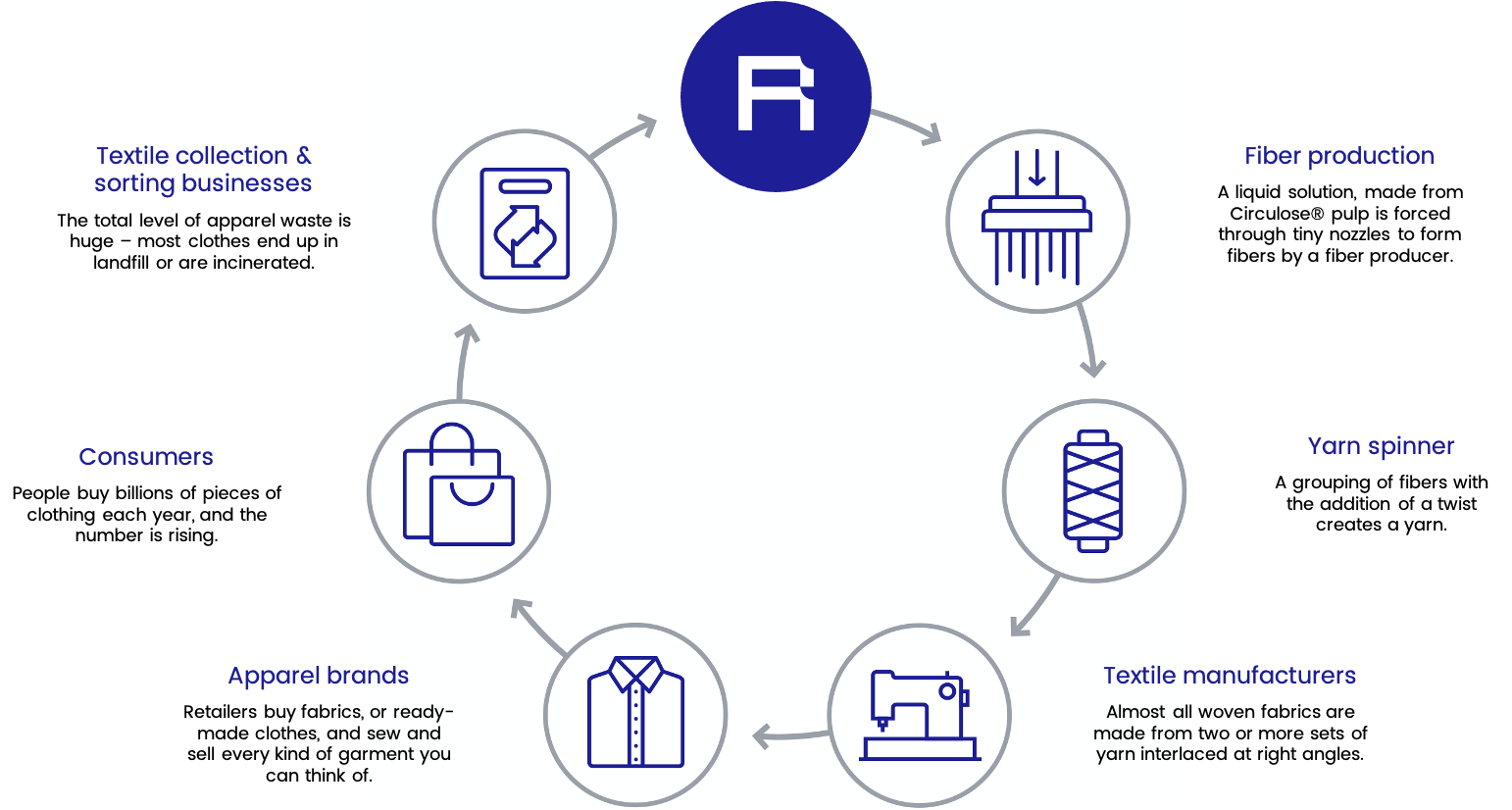Apparel Industry Deep Dive Part 3: What Can Be Done?

In Part 1 and Part 2 of this series, we described the methods we used to calculate the environmental and social harms of the global apparel industry. More specifically, we looked at the industry's impact on climate, water, and biodiversity in Part 1 and the impact on human health, labor practices, and waste production in Part 2. Our analysis shows that the the global apparel industry's cumulative externalities are ≥$1.6 trillion per year, on par with the gross revenue of the industry (~$1.7 trillion per year).
Now that we know how big the problem is, what can we do to reduce the externalities? In this post, we will highlight some potential solutions aimed at individual consumers, apparel companies, and governments. This is not meant to be an exhaustive list — please feel free to add your ideas in the comments.
Consumers
All of us have direct control over how many pieces of clothing we buy and discard, and there are many adjustments we can make to our buying habits. As much as we can, we should buy higher quality clothes that last longer, choose styles that are likely to endure, buy from retailers that are serious about sustainability (and don’t support retailers like this one who are known for greenwashing), etc. You can see more suggestions from Project Regeneration.
At this point you might ask, do individual actions really matter when it comes to systemic problems? My take: no and yes. No, your personal restraint from buying fast fashion won't solve this global problem. But yes, you are absolutely part of the solution! Think about this: apparel companies won't change how they do business unless they see a change in what their customers want, and many governments won't enact new policies unless enough of their citizens demand change.
Systemic changes won't happen until there is a change in culture, and culture changes don't occur until there are enough individuals who want something different and start acting differently. If you want to change your clothes buying habit, go ahead and change! Don’t worry about not being able to solve a global problem on your own. Tell your family, friends, neighbors, and coworkers about it, too. Show that your purchasing behaviors align with your personal beliefs about a sustainable world. Some of the people in your personal network might even want to join you.
Apparel companies
There are many steps that apparel companies can take to reduce the harms they cause. Here are some examples in the impact categories we covered in Part 1 and Part 2:
- Climate — decarbonize supply chains
- Water — increase water reuse and improve treatment of textile wastewater
- Biodiversity — reduce / eliminate the use of pesticides in cotton cultivation
- Human health — eliminate toxic dyes and other chemicals used to produce clothes
- Labor practices — pay workers fair wages at all stages of the value chain
- Waste — expand the recycling of textiles
But as this video explains, many retailers face pressure to keep prices low even as labor and production costs have soared, and something has to give if the retailers are to maintain a certain profit margin. So while there is no shortage of potential solutions, economic viability remains a challenge.
Case in point: Renewcell, the world’s first industrial-scale textile-to-textile recycling plant based in Sweden, filed for bankruptcy in February 2024 due to weak demands for its recycled textile fibers despite having big-name backers like H&M. The high price tag of the recycled fibers was no match for the low price of virgin fibers, and financial consideration was more important than sustainability concern at the end of the day.
Nonetheless, those familiar with the Renewcell situation remain optimistic about circularity in the apparel industry. The problem with fashion waste will not go away on its own, and there is an enormous opportunity for individuals and organization who have the courage and tenacity to address it.

Governments
Good policies can certainly accelerate progress. The European Union has developed the EU Strategy for Sustainable and Circular Textiles, which includes directives that addresses a number of issues, such as making clothes last longer and easier to repair, restricting the export of textile waste to other parts of the world, and prohibiting greenwashing claims by apparel companies.
The US is far behind the EU when it comes to sustainability policies aimed at the apparel industry. California has passed a regulation (SB 253) that requires businesses making more than $1 billion in annual revenue to report scope 1 through scope 3 greenhouse gas emissions starting in 2026. Furthermore, New York has proposed the Fashion Sustainability and Social Accountability Act (Fashion Act), which will require apparel companies to disclose their supply chains and do due diligence on environmental and human rights issues. The Fashion Act is moving through the New York State Senate.
Neither the California regulation nor the regulation proposed in New York goes as far as the EU directives. We will monitor the EU directives and see what lessons can help inform future fashion regulations elsewhere in the world.
Part 1: The Environmental Cost of Fashion